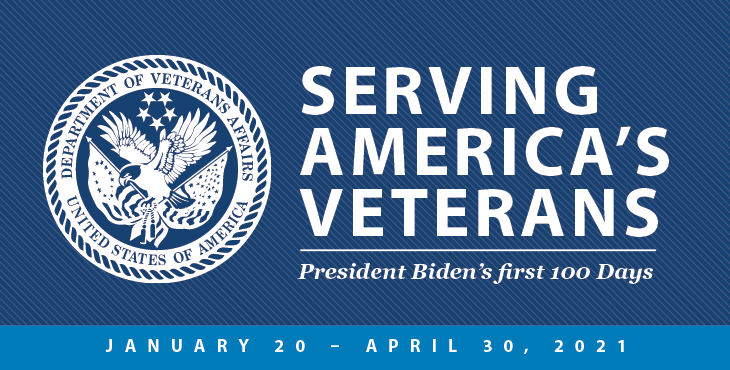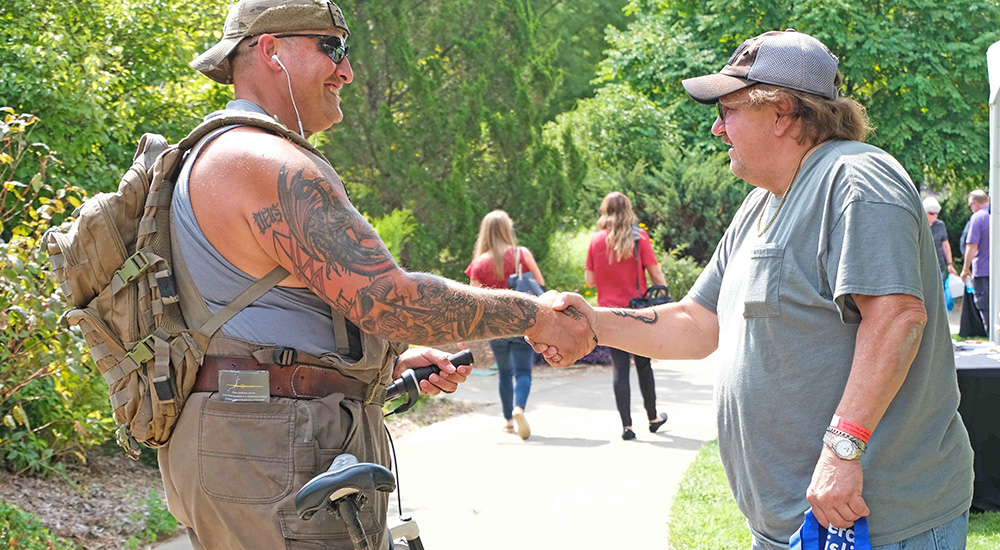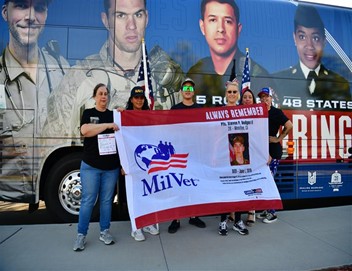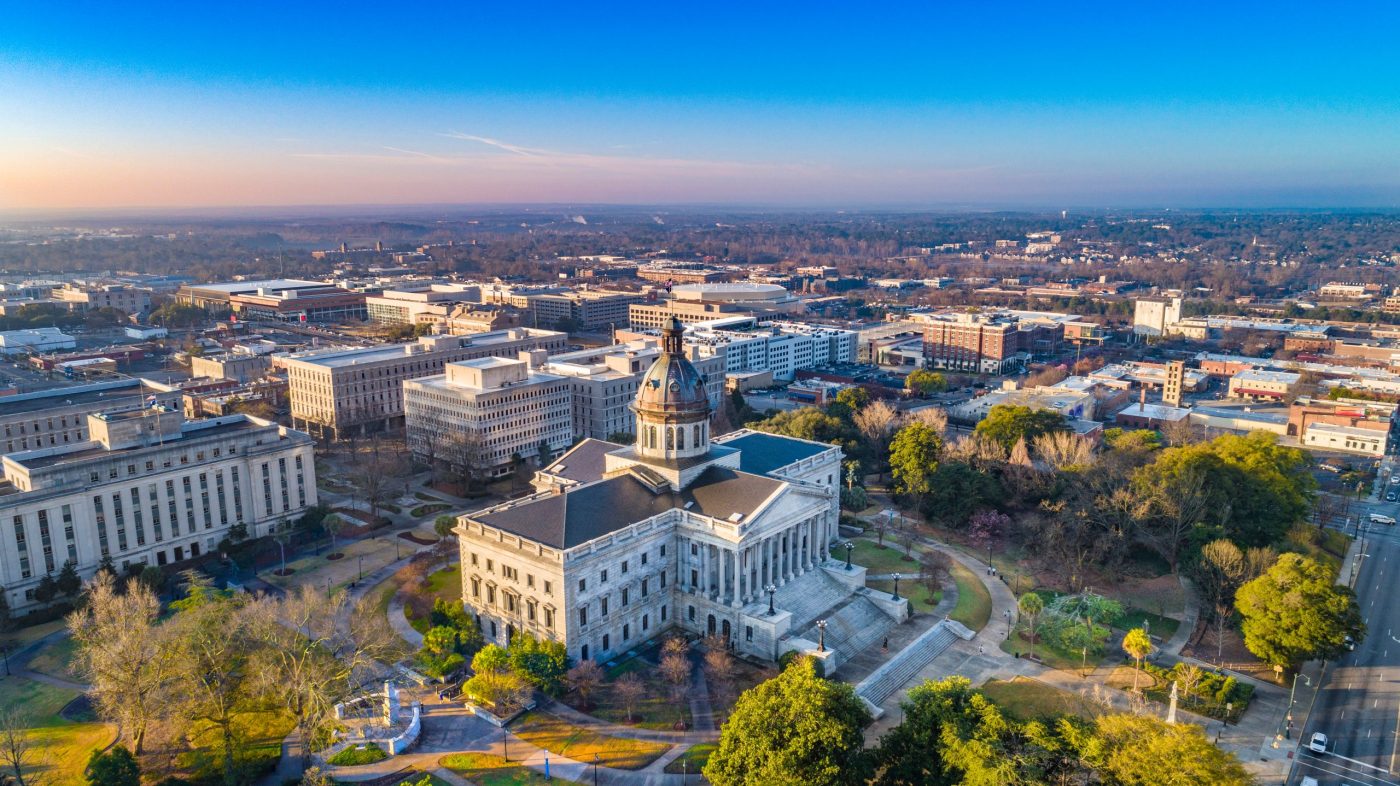April 30 marks 100 days since President Joe Biden took office. President Franklin D. Roosevelt coined the “first 100 days” moniker in a 1933 radio address at the height of the Great Depression. He used the phrase as a goal post to show that his administration had moved quickly to get the country working again.
While the yardstick’s judgement is colloquial in nature, its administrative embrace and use in the media is still common today. That’s why, on President Biden’s 100th day in service to America, we’re examining what that has meant for VA.
Vaccinations
No surprises here, the biggest VA story so far is COVID-19 vaccinations. VA began COVID-19 testing and vaccinations to caregivers in the Program of Comprehensive Assistance for Family Caregivers on January 22. By February 17, it had vaccinated 1 million Veterans, and on March 23, the SAVE LIVES Act allowed VA to provide COVID-19 vaccinations to all Veterans, their spouses and caregivers.
To date, VA has administered vaccines to nearly 2.2 million Veterans, spouses, caregivers, employees and federal partners.
(Want a shot? Sign up for the COVID-19 vaccine, here: https://www.va.gov/health-care/covid-19-vaccine/stay-informed)
Accessing your VA
What is the shape of VA to come? The pandemic forced VA to create new ways to administer care, benefits and services. In-person access to facilities has resumed, but the pandemic-forced ingenuity to problem solving remains.
Nearly 4.9 million Veterans accessed VA care in the first 100 days, but the number of video telehealth visits to the home (2.95 million+), community care referrals (1 million), website home page views (14.2 million) and contact center calls (18.7 million) show that Veterans are increasingly comfortable relying on VA technology and services.
VA delivered
The Veterans Health Administration saw 4.2 million in-person appointments and also delivered 800,000 COVID-19 tests; the Veterans Benefits Administration completed 396,000 disability compensation claims, 76,000 education benefits claims, 25,000 insurance claims, and 422,000 home loan guarantees; the Board of Veterans’ Appeals completed nearly 28,000 appeals and held nearly 6,500 virtual hearings; the National Cemetery Administration interred 35,000 Veterans with the honor their service promised.
Culture and inclusion
When Denis McDonough was sworn in Feb. 18 as the 11th VA Secretary, he set out to make VA safe and equitable for all.
Within a few days, he had launched a health equity review of all policies regarding care and services provided to LGBTQ+ Veterans. On April 14, he established a 120-day task force to examine inclusion, diversity, equity and access for women, minority and LGBTQ+ Veterans. And today, on President Biden’s 100th day, VA will unify and augment the management of suicide prevention efforts, ensuring over 1,400 employees and more than $300 million are focused on achieving better outcomes for Veterans and their families, caregivers, and survivors.
A lot has happened at VA in President Biden’s first 100 days, but there’s a lot more coming, too.
Read more about what’s happened at VA during President Biden’s first 100 days: Biden_VA_first_100_days.
*This blog post was edited on 5/4/21 to reflect updated metrics in the “Accessing” section.
Topics in this story
More Stories
VA’s Veteran Buddy Check Week is planned for Oct. 21 – 25, 2024.
Carry The Load, an organization dedicated to remembering the fallen, will visit 34 VA National Cemeteries traveling 20,000 miles along five separate routes covering all continental 48 states known as the National Relay for Memorial May 2024.
The South Carolina VA team hosted an impressive Veterans Experience Action Center (VEAC) from March 21-23, 2024. Over three days, more than 1100 Veterans, families, caregivers, and survivors received real-time connections to Veteran resources.







I very much appreciate the FFCRA program that was put in place to help the VA employees who had been sick with COVID-19. This program expired December 31, 2020. When the new COVID-19 stimulus was passed it started on March 11, 2021. This left out those employees that happened to contract the virus between Jan 1st – March 10, 2021. These employees were forced to use their own leave (sick, annual, or LWOP), where as those employees that were sick prior to December 31, and after March 11, are getting their time reimbursed. I happened to be one of the employees that had to use my own time. I was sick with the virus for almost 3 weeks in January and I used up most of my sick leave and annual leave. Is there any provision for those employees, like myself? There are quite a few employees at my work place that are in this boat.
Thank you for your time.